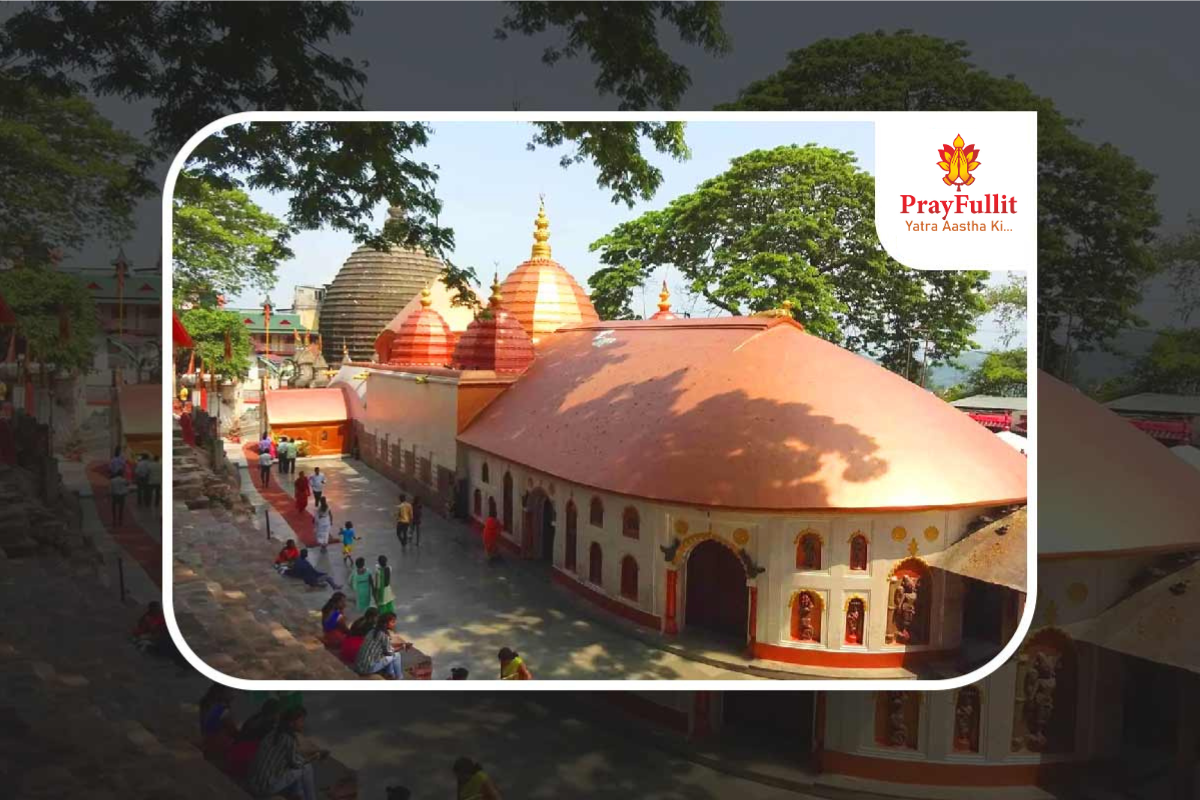
The Kamakhya Temple is one of the most important and revered Shakti Peethas in India, located on the Nilachal Hill in Guwahati, Assam. Dedicated to the goddess Kamakhya, an incarnation of the divine feminine power, the temple is a major center of Tantric worship. It is not only a religious site but also a significant cultural and historical landmark in the region.
Key Features:
Temple Significance:- Shakti Peetha:-The Kamakhya Temple is one of the 51 Shakti Peethas, where the yoni (genitalia) of the goddess Sati is believed to have fallen. This makes the temple a symbol of female fertility and creative power. The site is especially sacred because it represents the generative aspect of the goddess.
- No Idol:- Unlike many other Hindu temples, the Kamakhya Temple does not house a conventional idol. Instead, the goddess is worshiped in the form of a natural rock formation that resembles a yoni (female genitalia) and is always moist due to a natural spring.
Background:- Legend of Sati:- The temple is associated with the story of Sati, the consort of Lord Shiva, who immolated herself in protest against the disrespect shown to her husband by her father, King Daksha. Grieving Shiva carried her charred body across the universe, and pieces of it fell at various places, which became the Shakti Peethas. The Kamakhya Temple marks the spot where Sati's yoni fell, symbolizing feminine power and fertility.
- Kamadeva’s Desire:- According to another legend, Kamakhya is where Kamadeva, the god of love, was relieved of the curse of Lord Shiva, which had caused him to lose his virility. Worshiping at Kamakhya is believed to restore one’s desires and bring them to fruition.
Ambubachi Mela:- Annual Festival:- The most significant festival associated with the Kamakhya Temple is the Ambubachi Mela, held annually in June. It is believed that during this time, the goddess undergoes her annual menstrual cycle, and the temple is closed for three days. On the fourth day, the temple reopens, and devotees flock to receive the goddess's blessings.
- Significance:- The festival celebrates fertility and the nurturing power of the earth, symbolizing the menstruation of the goddess. It draws thousands of devotees, including Tantric practitioners, sadhus (holy men), and pilgrims from across India and beyond.
Worship:- The Kamakhya Temple is a prominent center for Tantric worship and practices. Tantra, a mystical and esoteric tradition within Hinduism, emphasizes the worship of the goddess in her various forms, including Kamakhya. The temple is considered a powerful site for acquiring spiritual knowledge and power through Tantric rituals.
- Sacrifices and Offerings:- Ritual animal sacrifices, particularly of goats, are a common offering at the temple, reflecting the deep-rooted traditions of Shakti worship. These sacrifices are believed to appease the goddess and fulfill the desires of the devotees.
Cultural and Historical Importance:- Historical Influence:- The Kamakhya Temple has played a significant role in the cultural and religious life of Assam and the surrounding regions. The temple complex has been patronized by various rulers, including the Koch kings and the Ahoms, who contributed to its expansion and maintenance.
- Cultural Significance:- Kamakhya is not only a religious site but also a cultural hub, influencing the local art, music, and folklore. The temple and its rituals are deeply intertwined with the identity and traditions of the Assamese people.
The Kamakhya Temple is not just a religious monument but a living symbol of the power of the goddess in her most primal form. It is a place where the spiritual, cultural, and natural worlds converge, making it one of the most fascinating and spiritually potent sites in India.